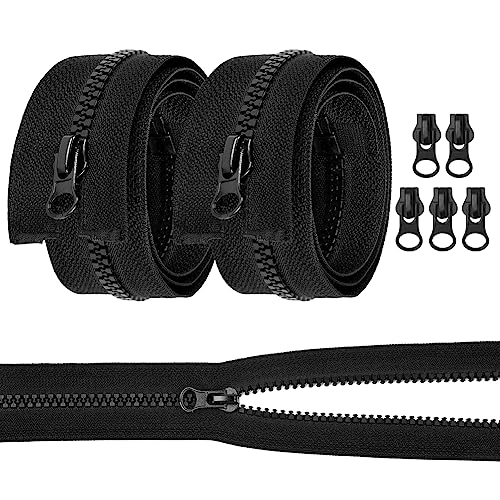Zippers in Sustainable Fashion: An Introduction
Sustainability has become a powerful driving force in the fashion industry, as brands and consumers alike aim to reduce their environmental impact. While many people think of materials and production processes when they think of sustainable fashion, zippers also play a vital role in contributing to sustainability. In this article, we will explore how zippers contribute to sustainable fashion and why they are an important consideration for brands and consumers.
Increased Durability and Longevity
One of the key ways that zippers contribute to sustainable fashion is through their increased durability and longevity. High-quality zippers, such as those made from metal or high-quality plastics, are designed to withstand heavy use and regular wear and tear. This means that garments with well-made zippers are more likely to last longer, reducing the need for frequent replacements.
By investing in garments with durable zippers, consumers can extend the lifespan of their clothing and reduce their overall consumption. This not only saves money in the long run but also helps to reduce the environmental impact of the fashion industry.
Ease of Repair and Recycling
An often overlooked aspect of zippers in sustainable fashion is their ease of repair and recycling. When a zipper becomes damaged or wears out, it is often possible to repair or replace it, extending the life of the garment. This is particularly important for high-quality and expensive items, as repairing the zipper can be a more cost-effective solution than replacing the entire garment.
Additionally, zippers can be recycled at the end of a garment’s life. Materials such as metal and high-quality plastics can be easily separated from the rest of the garment and recycled into new zippers or other products. This helps to reduce waste and ensure that materials are kept in circulation for as long as possible.
Sustainable Materials and Manufacturing Processes
The materials and manufacturing processes used in the production of zippers also contribute to sustainable fashion. Many manufacturers are now using eco-friendly materials, such as recycled plastics or organic cotton, to produce zippers. These materials have a lower environmental impact compared to traditional materials and contribute to reducing the industry’s carbon footprint.
In addition to the materials used, the manufacturing processes for zippers are also becoming more sustainable. Many manufacturers are implementing energy-efficient manufacturing techniques and reducing their water and energy consumption. By choosing zippers from these sustainable manufacturers, brands and consumers can support environmentally responsible practices in the fashion industry.
Versatility and Design Flexibility
Zippers also contribute to sustainable fashion by offering versatility and design flexibility. They allow garments to be easily altered or adjusted, promoting a “buy less, wear more” mentality. With the ability to change the fit or style of a garment, zippers enable consumers to refresh their wardrobe without having to purchase new items.
Furthermore, zippers can be used to create innovative designs that embrace sustainable practices. For example, zippers can be incorporated into garments to facilitate modular designs, where different components can be added or removed to create multiple styles. This encourages consumers to invest in versatile pieces that can be worn in various ways, reducing the need for excessive consumption.
Ethical and Transparent Supply Chains
Finally, zippers contribute to sustainable fashion by promoting ethical and transparent supply chains. Many zipper manufacturers prioritize fair labor practices, ensuring that workers are treated fairly and paid a living wage. By choosing zippers from these ethical manufacturers, brands and consumers can support workers’ rights and contribute to a more sustainable and socially responsible fashion industry.
Furthermore, some zipper manufacturers offer transparency in their supply chains, providing detailed information about the origin of their materials and the production process. This allows brands and consumers to make informed decisions about the sustainability of the zippers they choose to use or purchase.
Zippers may seem like a small and insignificant component of fashion, but they play a significant role in contributing to sustainable fashion. From increased durability and ease of repair to sustainable materials and manufacturing processes, zippers offer numerous opportunities for brands and consumers to make more environmentally responsible choices. By considering zippers as part of their sustainability efforts, the fashion industry can continue to make strides towards a more sustainable future.






